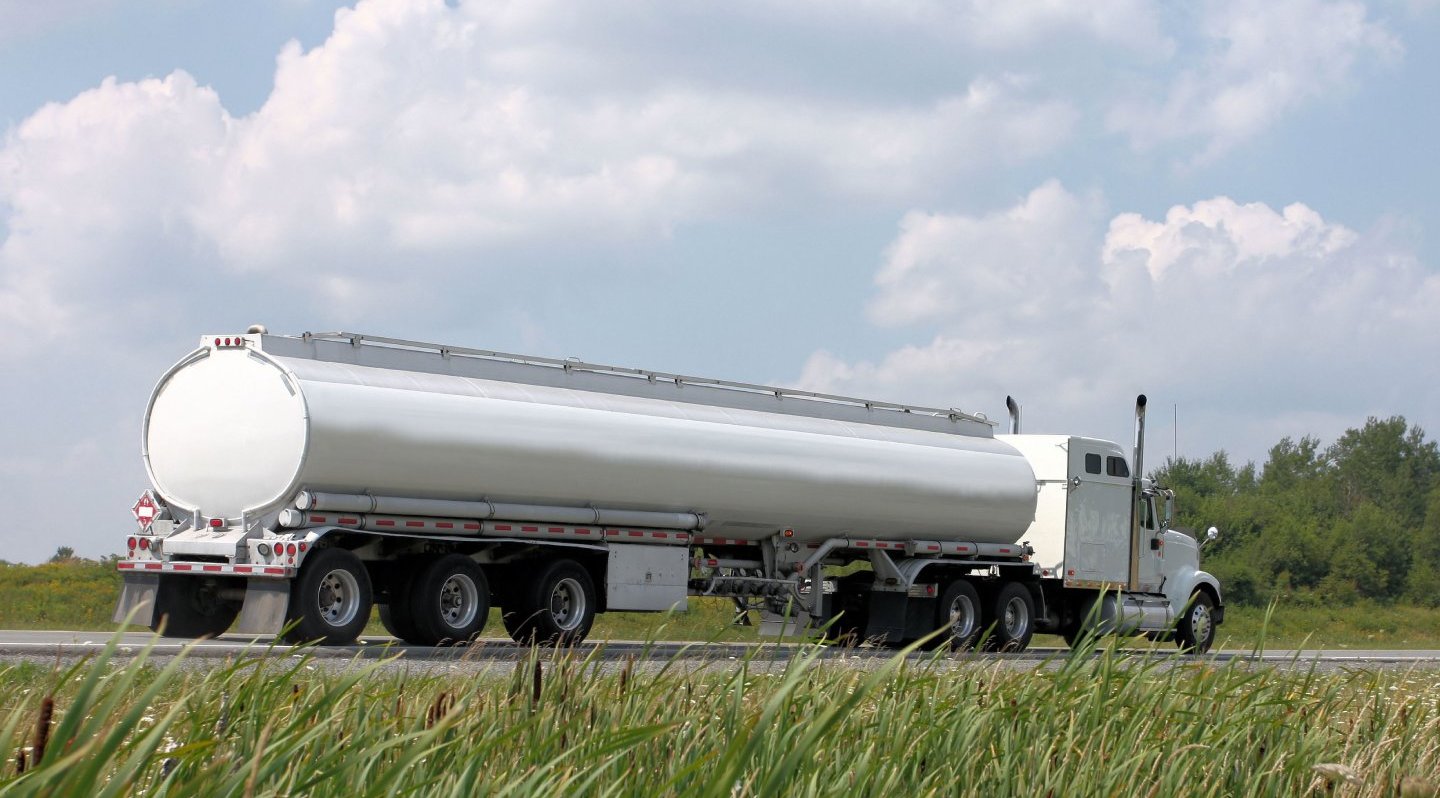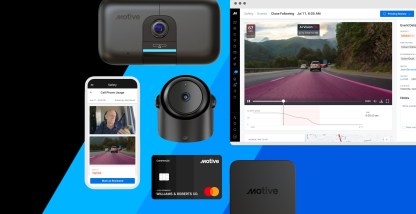Transporting hazardous materials adds a layer of complexity to the trucking job. The cargo could harm people, animals, or the environment. However, by exercising caution, understanding the materials, and using fleet management tools, hazmat trucking can be a rewarding field to be in. Fleet managers need to know all about managing the risks. This guide can help.
What is hazmat trucking?
Hazmat trucking is the transport of hazardous materials, which could be anything from hazardous gasses or poisons to waste or radioactive materials. The cargo could cause harm either on its own or when it comes into contact with air, flame, water, or other chemicals.
Although driving safely is always a priority, it’s critically important in hazmat trucking. Drivers hauling a hazmat load have the added stress of ensuring they are following the additional regulations for this type of cargo. Plus, they may need to avoid certain routes to detour around hazmat restricted areas. Fleet managers can make this easier for drivers by providing training and optimized routing.
Finding success in hazmat trucking also requires understanding the different classifications of cargo. More on that next.
Hazmat classifications explained
The Department of Transportation (DoT) has established nine classes of hazardous material. The Federal Motor Carrier Safety Administration (FMCSA) requires drivers to have hazardous material placards on the vehicle that correctly identify the hazmat category. Examples for each class to follow.
Hazmat Class 1: Explosives
There are six categories within this category depending on the type of explosion involved. This class includes dynamite, gun powder, and fireworks. The different categories within this class reflect whether there are mass explosions, projections, or fire considerations as well as the level of sensitivity.
Hazmat Class 2: Gases
This class is divided into three categories:
- Flammable gases (2.1) that burn readily in air
- Non-flammable gases (2.2), which can include liquified or cryogenic liquids (e.g. helium)
- Poisonous gases (2.3) such as carbon monoxide
Hazmat Class 3: Flammable Liquids
These liquids could ignite if they’re near an ignition source and at a temperature of 140 degrees or less. This class includes gasoline, ethanol, and many paints and solvents.
Hazmat Class 4: Flammable Solids
There are three divisions in this class. An example of a flammable solid (4.1) could be matchsticks. A spontaneously combustible material (4.2) and solid materials that are dangerous when wet (4.3) are also included.
Hazmat Class 5: Oxidizing Substances/Organic Peroxides
Class 5 contains oxidizers (5.1), which can contribute to the combustion of other materials. Hydrogen peroxide and silver nitrate are examples. The class also includes organic peroxides (5.2), which have an oxidizer and an organic fuel. These are hazardous because they can release heat and energy at dangerous levels.
Hazmat Class 6: Toxic and Infectious Substances
Toxic substances may sound like Hollywood disaster film, but 6.1 covers any toxic or poisonous material (solid or liquid) presumed toxic to humans. Category 6.2 covers infectious substances.
Hazmat Class 7: Radioactive Substances
Uranium or plutonium qualify for class 7, but there are other radioactive materials such as X-ray equipment.
Hazmat Class 8: Corrosive Materials
Think battery acid or degreasers — materials with the ability to eat away at skin or other materials due to their acid (low pH) or base (high pH) levels.
Hazmat Class 9: Miscellaneous Hazardous Materials
Miscellaneous hazardous materials involve anything else that poses a threat while on the road. These materials can’t be classified in the previous sections, so they’re listed in Class 9.
Hazmat regulations for trucking
Hazmat trucking has its own set of regulations from the FMCSA:
- Vehicles carrying hazardous materials are required to carry shipping papers containing the hazmat class and ID number (or name).
- The vehicle should be marked on all four sides with hazmat placards. The ID number must be on the placards. Otherwise, the placard name is needed.
- For containers with bulk packages inside, if the required ID number marking isn’t visible, the transport vehicle must be marked on each side and each end.
- The sub-category of the classification should be on the placard (e.g. 5.1 or 5.2).
Hazmat drivers must also be over the age of 21 and meet certain education requirements. While on the road, hazmat drivers must also wear personal protective equipment (PPE). Additionally, hazmat drivers need a hazmat endorsement on their commercial driver’s license (CDL).
Best practices for hazmat transportation
Hazmat driving is desirable and more competitive. Your drivers for hazmat transportation are typically more experienced. Still, there are some best practices that can help improve the hazmat transportation experience:
- Plan the route with drivers to avoid fines and protect public safety, driver safety, and the environment.
- Coach drivers to be vigilant and aware of their surroundings when driving or delivering hazardous cargo.
- Standardize inspection processes and proactively maintain vehicles for optimal service.
- Connect new drivers with experienced mentors to pass on industry know-how.
Hazmat truck driver responsibilities
Hazmat truck driving adds responsibilities. Not only are drivers handling hazmat cargo, but they must adjust routes based on certain restrictions. Plus, many of the materials are time-sensitive, so prompt delivery can be an added stressor.
This type of cargo also requires detailed records. Additionally, there are safety protocols to follow to ensure driver safety as well as safe loading, unloading, and/or disposal.
How to become a hazmat driver
Trucking companies will often pay a premium for hazmat trucking jobs. To get hired you’ll need to show you’re attentive to detail and a careful driver. You’ll need a clean driving record, and most fleets will be looking for you to have a couple years of non-hazardous material truck driving first.
You’ll also need the hazmat endorsement, which requires TSA background checks, a written test, and a DOT medical exam.
In addition to the hazmat endorsement (H), you’re also likely to need a tanker endorsement (X) on your CDL. The X endorsement also requires its own knowledge test.
Wondering if it’s worth it? The Bureau of Labor Statistics anticipates a seven percent growth rate in hazardous materials removal work from 2020 to 2030. Glassdoor reports the median total pay of a Class Z CDL Driver/HazMat Tanker as $83,053 annually in 2022. For comparison, the average dry van driver earns $53,714 annually, according to ZipRecruiter.
The dangers associated with hazmat trucking jobs
Hazmat truck drivers are transporting explosives, gasses, corrosive materials, poisons, and more. These could be potentially harmful in the event of an accident. Depending on the hazmat class, there’s also the chance of a criminal element trying to take control of that cargo in transit. Truckers and Training describes this as “a small, but terrifying, possibility.”
How to keep hazmat truck drivers safe and efficient with Motive
Whether your trucks are hauling oil and gas or a hazardous toxin, your fleet can benefit from real-time visibility from GPS tracking with a best-in-class fleet management software solution. Fleet managers can keep tabs on hazmat vehicles and notify customers of any delays.
Motive’s platform also supports the hazmat trucking best practices. Planning the best route is easier with an artificial intelligence-powered workflow tool. Optimize routes and operational planning with the data you need to pick the best driver for each load. Both fleet managers and drivers can receive real-time dispatch updates and deploy navigation within the Motive App.
Drivers can also be more aware of their actions with AI-powered dash cams. The Motive AI Dashcam can instantly alert drivers of unsafe driving. The cameras also help fleet managers by providing HD video evidence to prove innocence and avoid third-party liability. Plus, the dash cam footage is automatically analyzed and contextualized to flag drivers who would benefit from additional coaching.
Motive’s software supports asset health as well. Fleets can correlate ELD compliance vehicle inspection data with maintenance history to increase vehicle uptime and reduce repair costs with preventative maintenance.
Hazmat transportation has some added challenges. Motive’s software solution can help simplify things for both drivers and fleet managers. Request a demo today.










